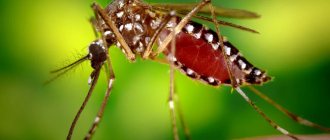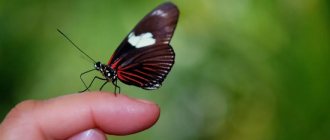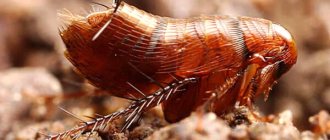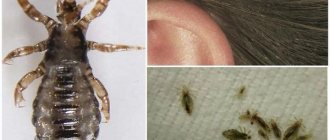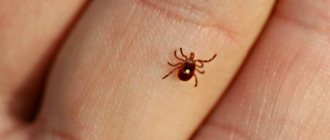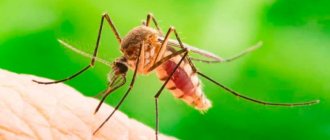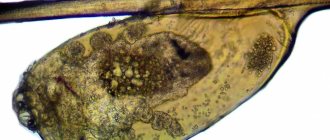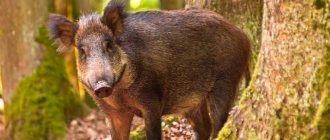Mosquitoes are a serious problem during the warmer months. The bites cause painful itching, and the insects themselves can carry diseases dangerous to human health and life. Interestingly, these harmful creatures do not only bother the average person on the European continent. You can meet them all over the planet. They are not found except in Antarctica. But in the Arctic they feel quite confident, although they are active only for a few weeks during the entire calendar year. At the same time, they reproduce in huge numbers. Caribou and reindeer bear the brunt of the attack, losing up to 500 ml of blood at a time due to the attacks of hordes of bloodsuckers.
People are not the only target of mosquito attacks.
Mosquitoes happily drink the blood of mammals and even birds. Nature has provided a mechanism that balances the spread of bloodsuckers. She created a special way of reproduction, as well as a limited lifespan of individuals. Get rid of mosquitoes in your country house
Get rid of mosquitoes in your country house
Hit from the USA. A guaranteed way to destroy all mosquitoes on the site.
skeetervac.ru
Open ›
How long do these harmful insects live and what does the timing depend on?
How mosquitoes reproduce
Young offspring appear in early spring - at the end of April, beginning of May. They gather in the area around the places where the larvae lived. Females and males lead a carefree life, feeding on the nectar of flowers. After a while they begin to gather in flocks. The insects mate for several days and fly away in different directions. After this, the diet of mosquitoes undergoes changes depending on gender. Males continue their life in the grass and foliage of young trees, females go in search of food.
To form eggs, female mosquitoes need protein and lipids; the insect receives all this from the blood of animals, humans, and, less often, birds. After being completely saturated, the mosquito flies to a quiet place, digests the food, and eggs are formed during this time. Then he looks for a reservoir with standing water or damp soil and makes masonry.
Insects reproduce very quickly. At one time, a female mosquito reproduces from 50 to 150 pieces. Scatters them one by one. Mosquito eggs float on the surface of the water; at temperatures above +15 degrees Celsius, larvae appear after 9 hours. If the temperature is below these indicators, development extends over time to 20 days.
On a note!
How many eggs a mosquito lays depends on its habitat, food, and life expectancy. In an apartment, the insect's life cycle is shorter than in nature. The female does not have the opportunity to lay a large number of eggs, because there is simply nowhere. Without blood, the insect is able to give birth to new offspring, but the clutch will be no more than 50 pieces, the mosquitoes will appear small, weak, and the female in most cases dies.
Reproduction and lifespan
During the mating season, females produce an incomparable squeak, which they produce due to the movements of their wings. This sound attracts males. Moreover, the sound of mosquitoes of different ages is different.
The mosquito catches these differences and chooses an adult female capable of childbearing. In the swarm formed by mosquitoes, the process of mating of females with males occurs. After this, eggs are laid.
Sometimes their number can reach up to 290 pieces. This process can be repeated every 3 days. After going through all the phases of its development, an adult mosquito is eventually born. The lifespan of males and females is slightly different. The first ones usually live no more than a month. Females are given a longer period - about 2 months.
Cycle of life
The lifespan of a mosquito directly depends on the habitat into which it finds itself after birth. Temperature plays the main role. At +25°C, insects live for about 45 days; at +20°C, the lifespan of a mosquito increases to 60 days. A decrease in temperature below +15°C slows down metabolic processes in the body of adults and larvae, prolonging their existence to 119 days.
On a note!
How long a common mosquito lives depends on its gender. The average life expectancy of a male is 14 days. Genetic ability – 20 days. When talking about timing, they most often mean how long the female lives.
Mosquito reproduction
In the wild, mosquitoes drink the blood of animals and reproduce healthy offspring in large quantities. In a humid, moderately warm environment, the mosquito can live for almost 2 months. An increase in indicators from +25 degrees Celsius does not allow insects to rise into the air, as they instantly lose moisture. Whereas, under favorable conditions, mosquitoes reach the 9th floor. A decrease from +10 degrees Celsius helps to slow down metabolic processes, the insect falls into suspended animation, but continues to live.
Description of the species
The squeak mosquito (Culex pipiens) or common mosquito belongs to the order Diptera, the mosquito family. The body of the imago is long and slender, size 5-7 mm. The small head is covered with brown scales. There are compound eyes on the sides. The antennae consist of 15 segments, the organ is used to recognize odors. The mouthparts are of the piercing-sucking type, characteristic of parasitic insects. The lower lip transformed into a proboscis. Females have piercing needles inside – bristles. The male's lack of an upper jaw does not allow him to gnaw through the skin. In a calm state, the long proboscis bends into the groove of the lower lip.
Interesting fact. The word "mosquito" has Slavic roots and refers to swarming insects.
The body color is yellow, brown or gray. The chest is wider than the abdomen, consisting of 10 segments. The limbs are thin and long, there are 2 claws on the paw. Insects have only two fore wings, the hind wings are reduced. The transparent wings along the veins are covered with scales. The abdomen is covered with brown scales, on the underside there is a band of light yellow scales. The proboscis of the male squeaker mosquito has long hairs.
Interesting fact. The characteristic squeak of a mosquito is emitted by its wings, which move at a speed of 1000 beats per second.
Danger to humans
Mosquitoes drink blood to reproduce, to replenish energy reserves, and to continue living. Humans attract insects with the smell of lactic acid, carbon dioxide, sweat, and heat. At the site of the bite, irritation, swelling and redness, itching appears, and sometimes a severe allergic reaction develops.
There is no particular harm from an ordinary mosquito. However, other species pose a danger to humans. In tropical countries, insects cause myiasis. They lay eggs in humans, the larva begins to develop under the skin on the body or migrates to the eyes, internal organs, and brain. Deadly diseases are carried by malarial mosquitoes, icteric mosquitoes. Karamors or large mosquitoes are classified as agricultural pests. This species is not capable of biting humans; it feeds on nectar and plant juices. The larvae damage roots, berries, and fruits.
Character and lifestyle
Mosquitoes are not harmless insects. Their females are real parasites who need to feed on someone else's blood for their continued existence and production of offspring.
Often their bites become fatal for people, because mosquitoes carry a wide variety of diseases dangerous to people. Insects are distinguished by amazing endurance, but they do not live in too cold climatic conditions.
In places with a temperate climate, mosquitoes are active from late spring to October. With the early arrival of spring, their appearance can be observed in April.
In the summer, they can be everywhere - in a living room, on the street, in the forest, near a pond. In winter, mosquitoes find refuge in barns with livestock, in basements and other buildings.
Developing mosquito-like speed, insects can cover a distance of 1 km; females especially practice such flights when they are looking for something to profit from.
Mosquitoes are the root cause of many ruined outings and just restful nights in a living room. Therefore, people have long made sure that in such situations they always have the necessary mosquito repellents.
A variety of methods are used to combat these insects. People have never learned to completely destroy squeakers, but they still manage to protect themselves from them.
mosquito repellers have long proven their worth which you can turn on in your living room and not be afraid of being woken up or bitten by an insect at night. These devices have very different structures, but the benefits from them are incredible.
During camping and expedition conditions, people are saved by various ointments from mosquito and insect bites . There are ointments that help relieve symptoms of itching and allergic reactions caused by mosquito bites. They help avoid severe negative consequences in the form of swelling and inflammatory processes.
Air temperature
Mosquitoes don't like heat or cold. What weather do mosquitoes like? The optimal temperature for their life and development is +20 °C. But bloodsuckers are active already at +12 °C. The lower the temperature, the slower the insects develop and practically lose their ability to reproduce. Pests don't like high temperatures either. Why don't mosquitoes like heat? In the heat, their thin, weightless body dries out on the fly. But if you don’t see them in the city on a hot day, you should go hiking or fishing and have to fight off the insects.
Mosquitoes are afraid of the sun and hide in the shade of trees, grass, and bushes. But if they are disturbed, they will attack, despite the heat, especially since the dense foliage reliably protects them from the direct rays of the sun in the forest.
Some people think that mosquitoes love the heat, since they are active in the summer, but in fact this is not so, they do not like the sun and are even afraid of it.
In summer, the risk of attack is higher in the morning and evening. During the day they seek coolness and sit in shelters. There are species of mosquitoes that are active all night.
With the onset of cold weather, mosquitoes disappear. It cannot be said that mosquitoes are afraid of the cold, because they do not die, but spend the winter, entering diapause in the adult, pupal or egg stages.
Adult insects hide in tree hollows, animal burrows, tree trunk cavities and other places protected from the cold. Only females hibernate; nature has not given males such a privilege.
The eggs wait for warm days in the soil, mud at the bottom of reservoirs. Pupae are attached to aquatic vegetation or are also buried in silt and mud. After all, even in severe winters, only the top layer of reservoirs freezes.
In spring, as warm days arrive, the development of larvae continues. New individuals emerge from the eggs.
What temperature do mosquitoes not like? At temperatures from +16 to +25 °C they feel good. Temperatures outside this range negatively affect the life of insects.
Insect protection
To protect themselves, people use special devices, repellents and folk remedies. Each option has its own characteristics.
Special devices
- Traps. They are only suitable for catching pests. Before catching a mosquito in a room with their help, you need to choose a place for installation. By installing them in the house, you no longer have to think about how to catch blood-sucking mosquitoes in your room or in your country house. The caught insects are thrown into hot water.
- Fumigators. Such devices are suitable for those who are interested in how to kill annoying mosquitoes at night. Fumigators distribute repellents that attract and kill parasites.
- Repeller. The principle of its operation is based on the production of ultrasound. Modern repellent devices differ in range and configuration. There are stationary and autonomous repellers. Stationary devices are installed in local areas and summer cottages. Autonomous devices are used by fishermen and hunters.
Chemicals
For protection, repellent preparations are also used, which are produced by various companies. The most popular are:
- Sprays and aerosols. They contain insecticidal components and natural repellents. They interrupt the smell of a person.
- Creams and gels, for the preparation of which various components are used.
Folk remedies
Among the folk remedies used to repel blood-sucking insects are:
- Tomatoes, geraniums, bird cherry and tansy. These plants have a rich aroma. Pests never approach them. They are planted in pots or in the soil near the house in order to create a buffer zone.
- Citrus extracts. They are applied to the skin using cotton pads or clothing. Essential oils are used to treat window openings and furniture.
- Vanillin. It is presented in various variations. You can choose vanilla sugar or vanillin extract to prepare the protectant. The list of recipes in which this component is present is huge. Therefore, each person will be able to choose the appropriate option.
Before killing mosquitoes, you need to think about whether they really disturb the peace and interfere with life. After all, not all species are harmful to humans and the environment.
Sweet taste
It is known that mosquitoes love sweets, so they are more likely to bite those people who eat a lot of sweets. Secretion more actively releases saccharides. Thanks to sucrose, the taste of the skin becomes preferable to mosquitoes. Diabetics fall into the “favorites” category. After all, these people not only have sweetened blood, but they also exhale air saturated with acetone and estradiol.
In addition, the circulatory system is enriched with lactic acid after the breakdown of glucose. This element is a real delicacy for mosquitoes. Lactic acid is more intensely released in the body due to active physical activity and consumption of certain types of foods with large amounts of carbohydrates.
Classification
Insects are divided into two subspecies:
- C.p. pallens is a mosquito with a brown body color and white stripes on the limbs and proboscis. Distributed in Japan and North America.
- C.p. pipiens - the subspecies has two forms:
- Culexpipienspipiensformapipiens – dipterous insects of this form easily adapt to various conditions for the development of larvae. Their offspring grow in any body of water and do not require clean water. The number of larvae depends on the nature of the development site - in a puddle there are 100-800 of them per square meter. m, and in the gutter 5400-27500 pieces/sq. m.
- Culexpipienspipiensformamolestus - urban or basement squeak mosquito. The form has several behavioral and physiological differences. Adults do not require swarming to mate. One of the important features of molestus is autogeny, the ability to lay eggs once without feeding on blood. Young females manage to lay a clutch of 100 eggs immediately after emerging from the pupa. This ability allows you to quickly increase the number of insect colonies.
The city mosquito is characterized by aggressive behavior. Its bites are more painful and are more often accompanied by infections and allergic reactions. To exterminate adult parasites in basements, treatment is carried out using contact insecticides that have a prolonged residual effect. Spraying vegetation within a radius of 300 m around the building allows you to increase efficiency. Larvicides are used in areas where larvae hatch.
